Perfect Sourdough Bagels
These perfect sourdough bagels have a classic golden- brown, crusty exterior and a perfectly chewy, tangy sourdough center. Perfect for toppings!

why you’ll love these perfect sourdough bagels
You will impress everyone at your table when you serve these perfect sourdough bagels – they are a symphony of chewy texture and tangy flavor that will leave everyone satisfied. They strike the ideal balance between the classic bagel’s hearty bite and the unique tang of sourdough. You can start and finish them in one day OR refrigerate them for a longer overnight ferment. You can load them up with your favorite bagel toppings and serve them with warm cream cheese or slice them up and serve them as a savory breakfast sandwich.

Ingredients you need for sourdough bagels

To make these perfectly delicious sourdough bagels you will need:
- Active sourdough starter
- Filtered lukewarm water
- molasses
- Kosher Salt
- Table Sugar
- All purpose flour
- cornmeal for dusting
- olive oil
- optional: toppings such as everything bagel seasoning, poppy seeds, white sesame seeds

To prepare the perfect sourdough bagels:
**NOTE: Feed your starter the night before or early in the morning before you bake so that it will be at peak activity when you begin mixing up your dough. You need a healthy starter for this recipe.
Step 1: Mix the Liquid ingredients
First, measure out two cups of slightly warmer than room temp water. You do not want it to be hot! Just barely warm to the touch. Add the molasses, table sugar and salt to the water. Stir to dissolve. Then, add the starter to the water.
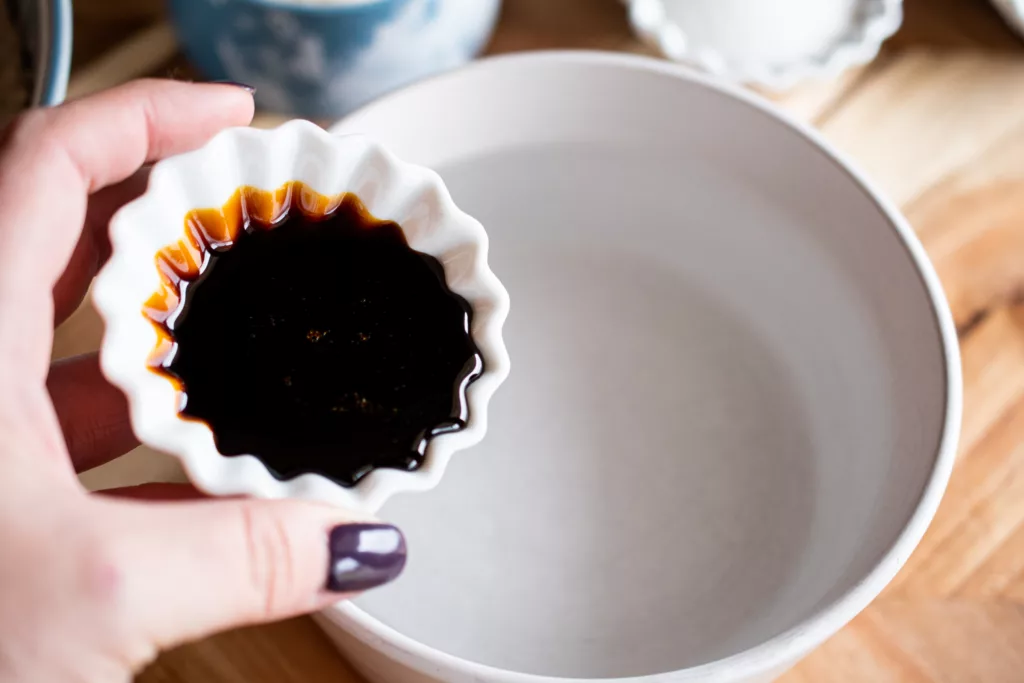




Step 2: Prepare the Dough
Transfer the dissolved starter liquid into the bowl of your stand mixer and add the all purpose flour. Mix on low until all the flour is combined. The dough will look shaggy at first, but don’t worry! Just keep mixing. Once the flour is incorporated, turn the mixer up to medium speed or five minutes. The dough should look smooth and be tacky but not sticky. It should almost pass the windowpane test.
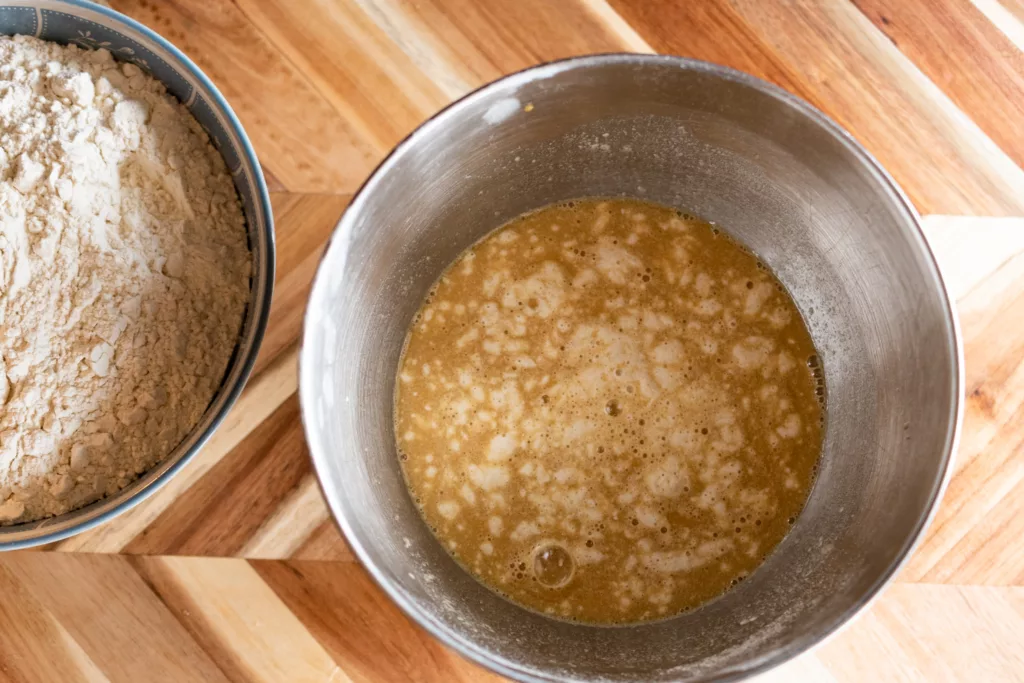
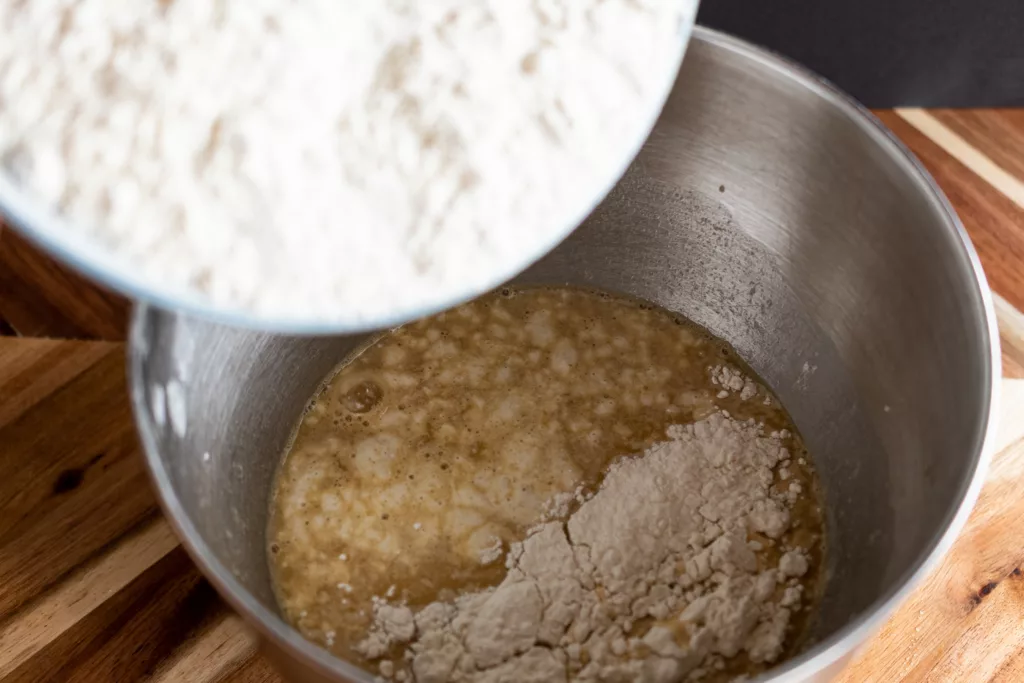
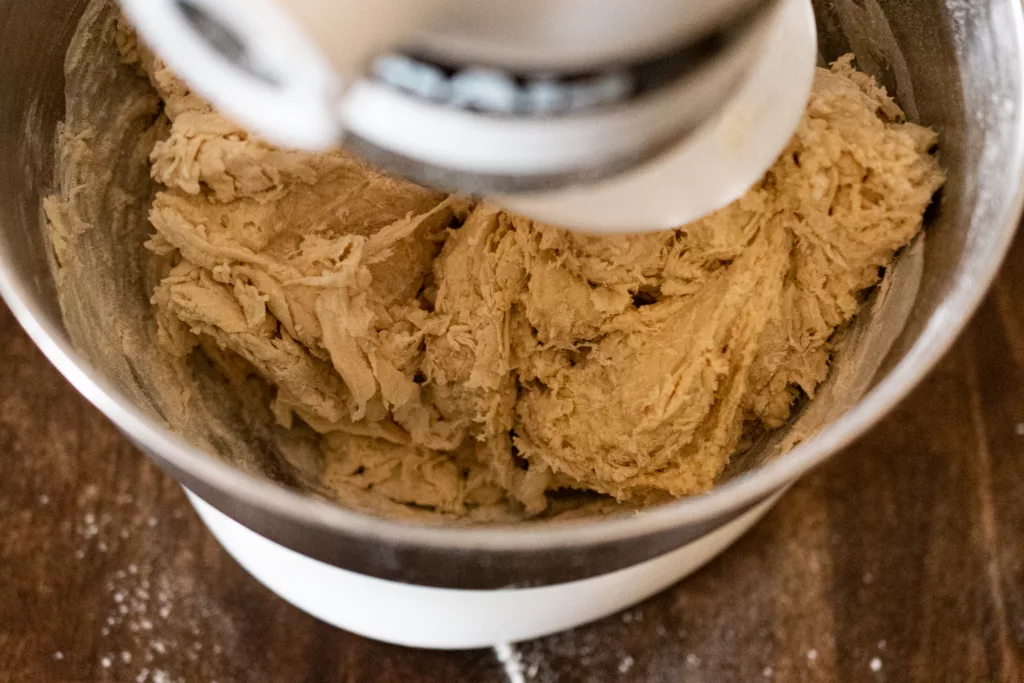
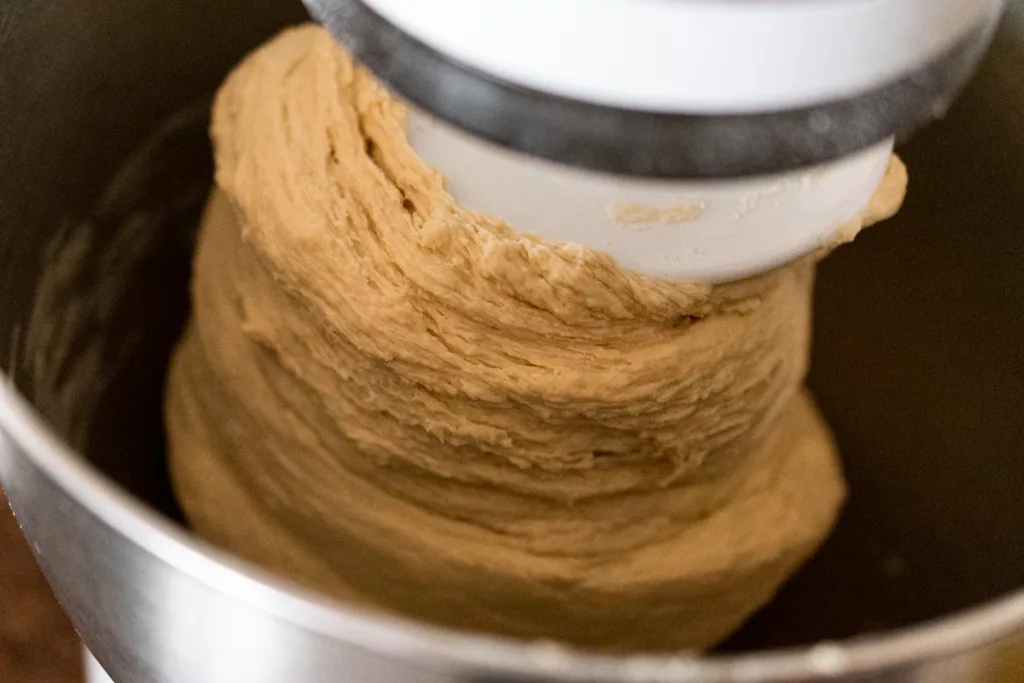
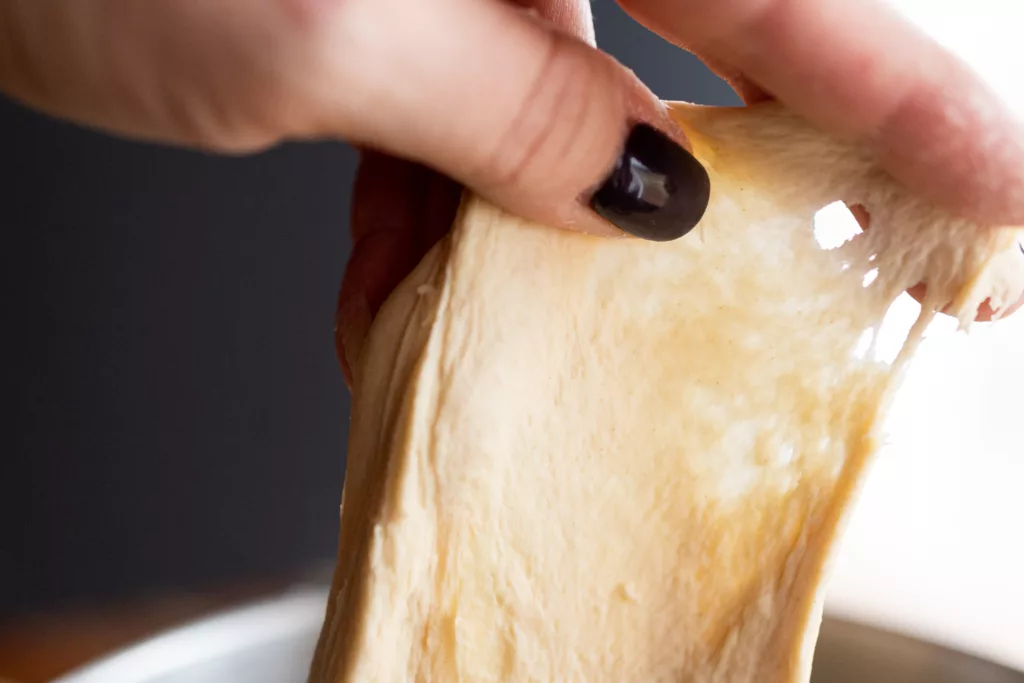
Step 3: Bulk Fermentation
Place a few Tbsp of olive oil or butter into a bowl and place the prepared dough into the bowl. Turn the dough to coat it on all sides. Cover the bowl with a clean towel and place in a warm location so the dough can begin its first rise. Allow the dough to ferment for 4-6 hours.
While the dough ferments, prepare your baking sheet by placing a piece of parchment paper on it. Then sprinkle it with cornmeal to keep the prepared bagels from sticking.

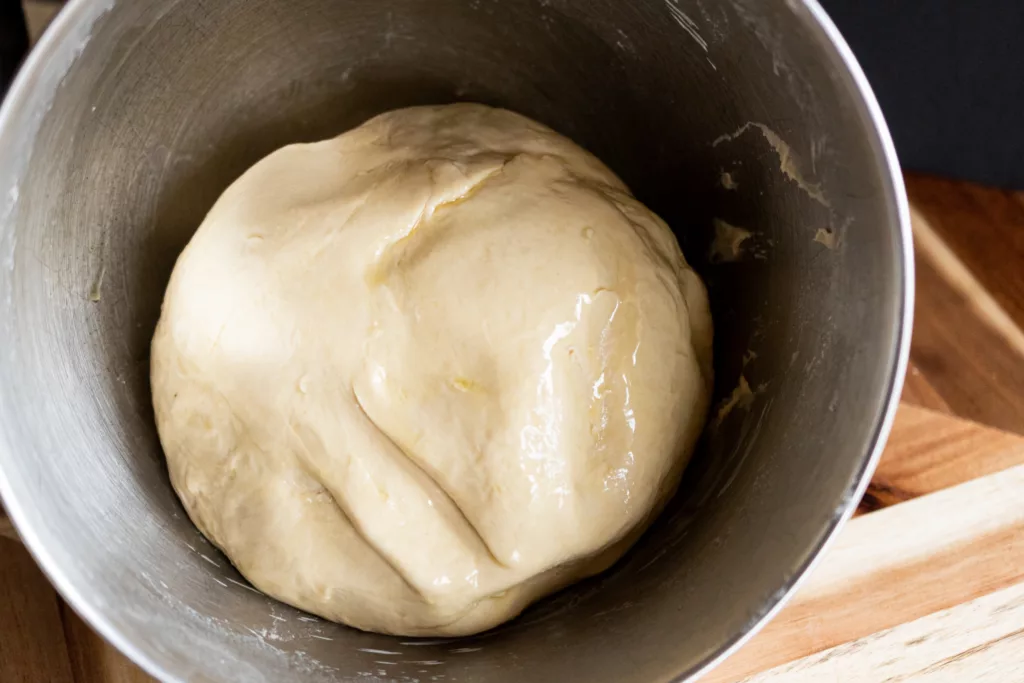

Step 4: Shaping the perfect sourdough bagels
To begin shaping the bagels, first divide the dough into 12 equal parts. I like to weigh these out on my kitchen scale to 125 grams per dough ball.
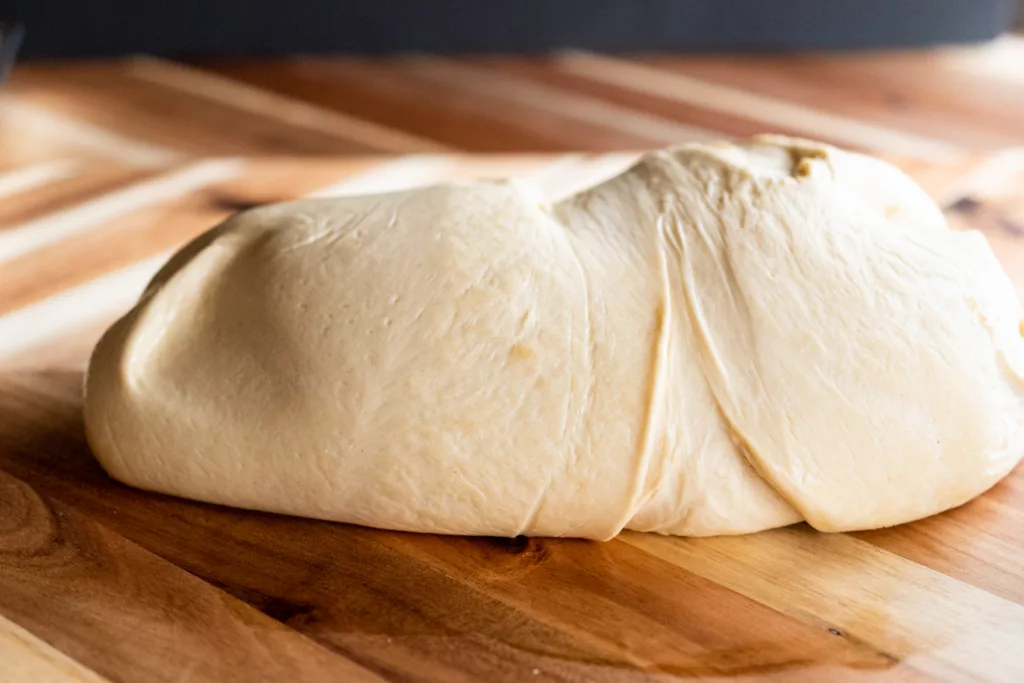

Next, you will form the bagel. You can do this one of two ways.
Beginner Bagel Formation:
Roll the dough ball on the countertop to smooth out seams and then using your thumb, press a hole into the center of the dough. Then, gently stretch out the hole out with your fingers.
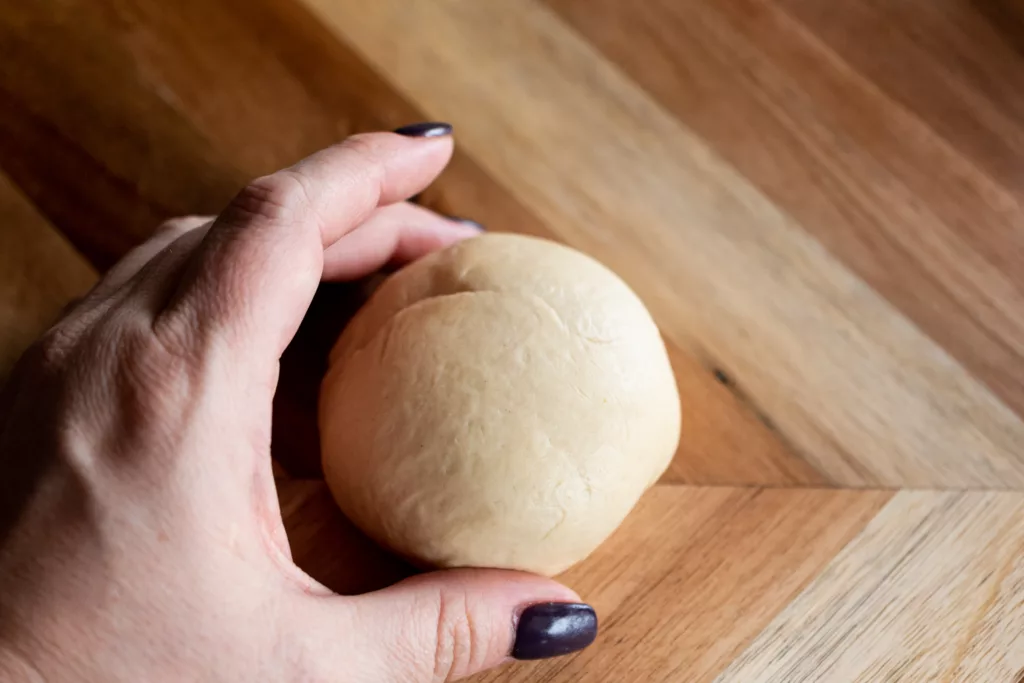
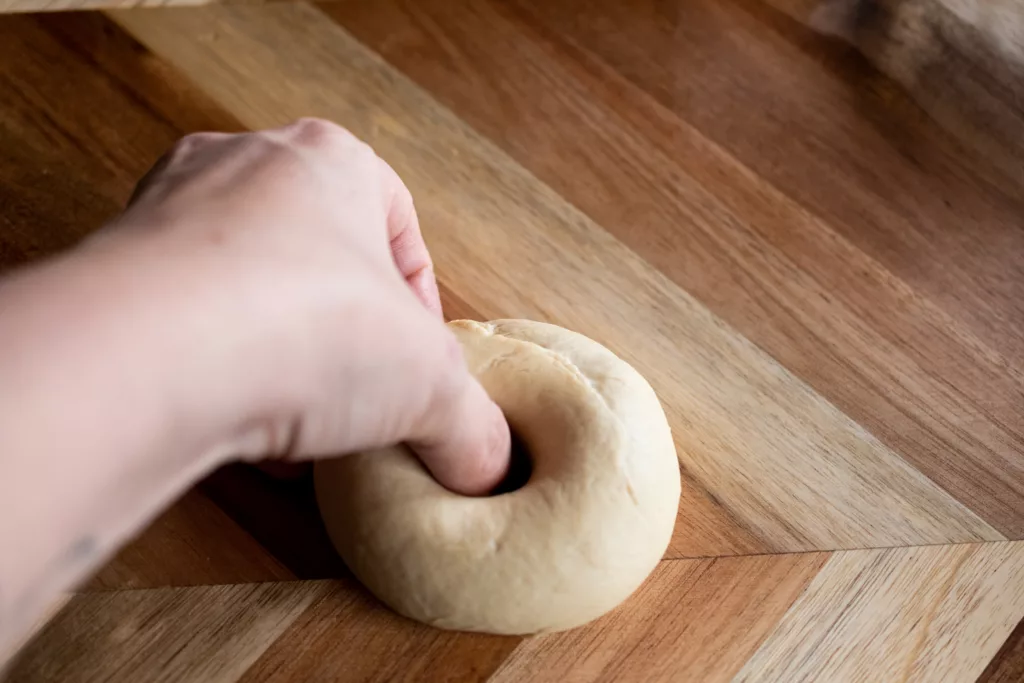
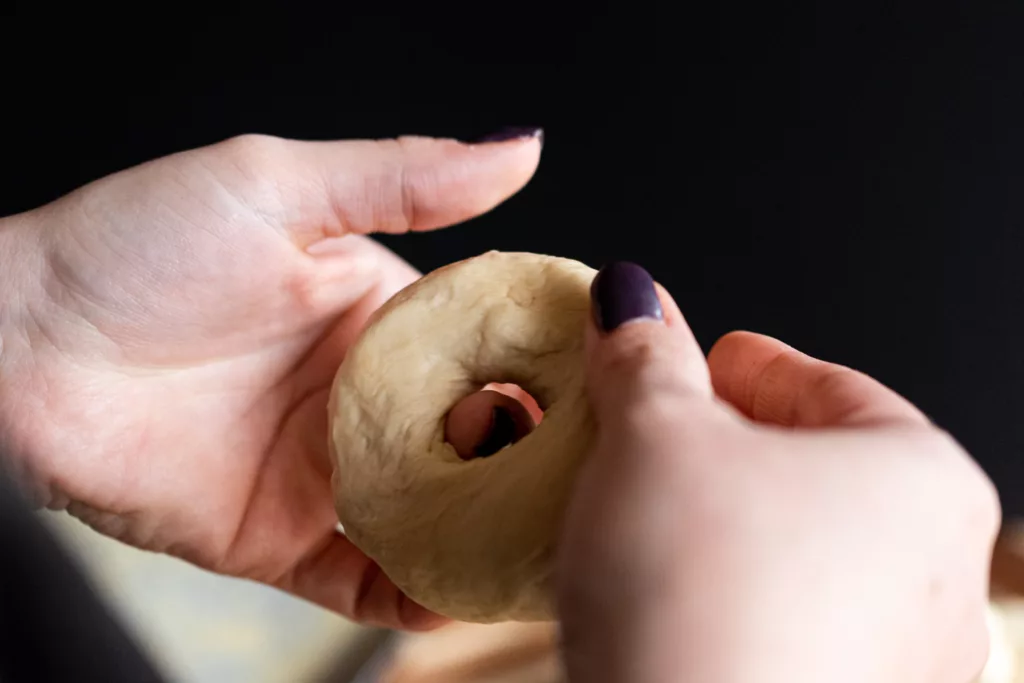
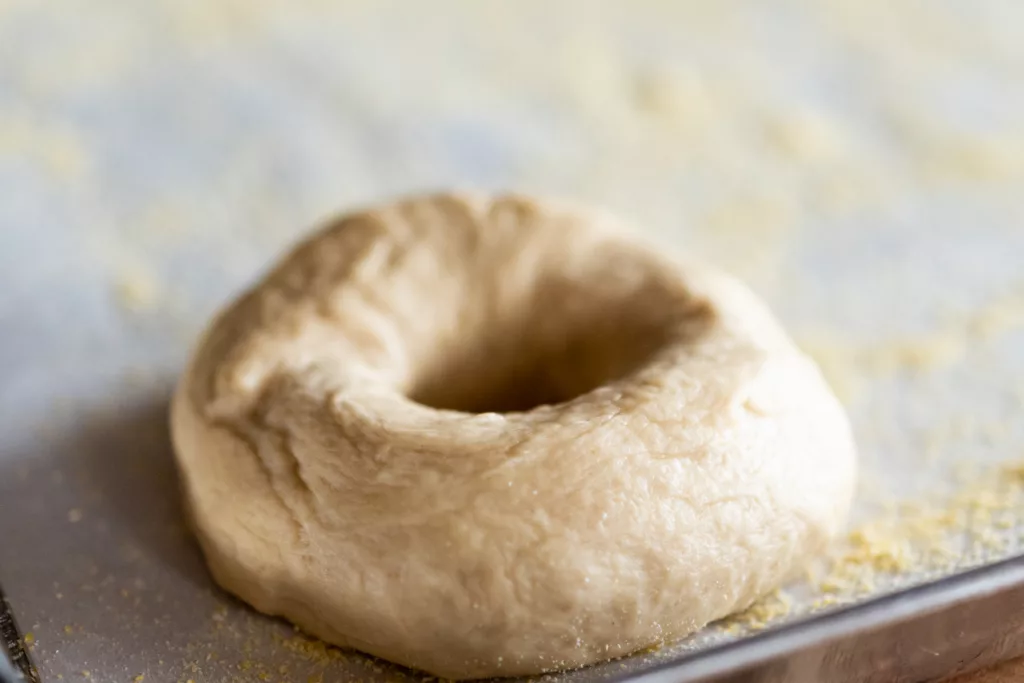
Experienced Bagel Formation:
Gently stretch the dough ball into a rectangle on the countertop and then roll it tightly away from you into a log. Then, roll the log out so that it is long enough to wrap around your hand. Overlap the dough in your palm and then press the dough seam onto the countertop, rolling a few times to seal the dough.
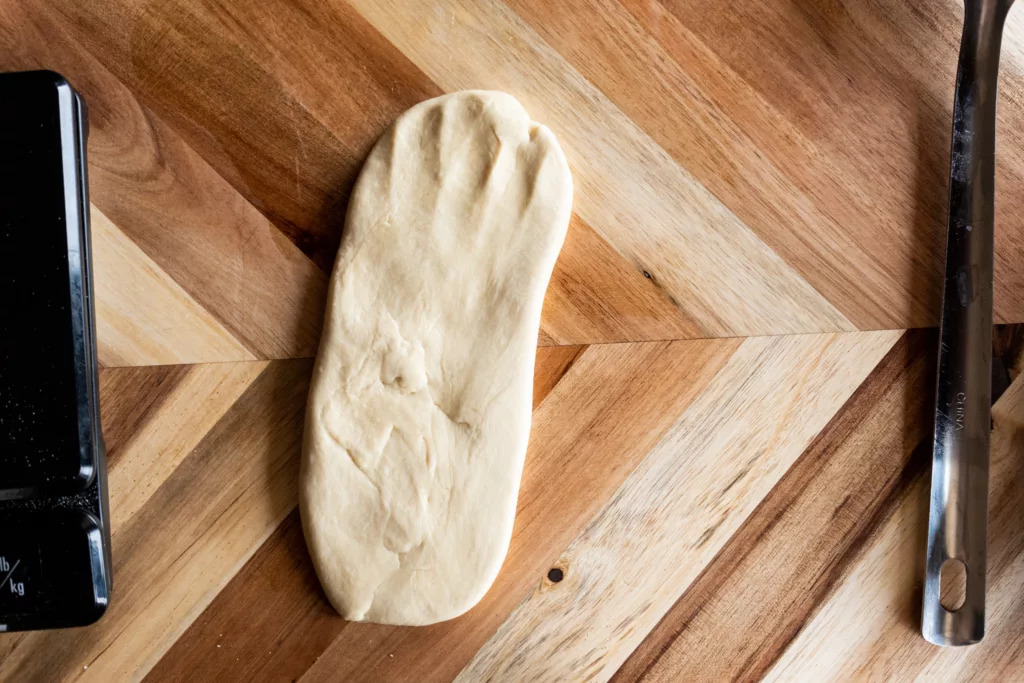
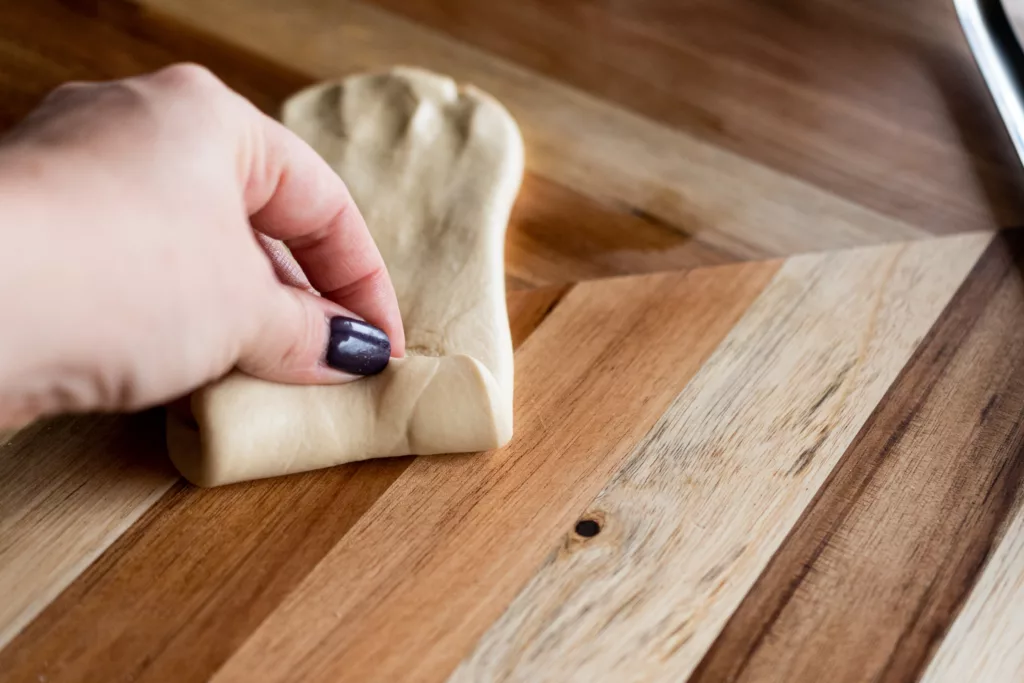

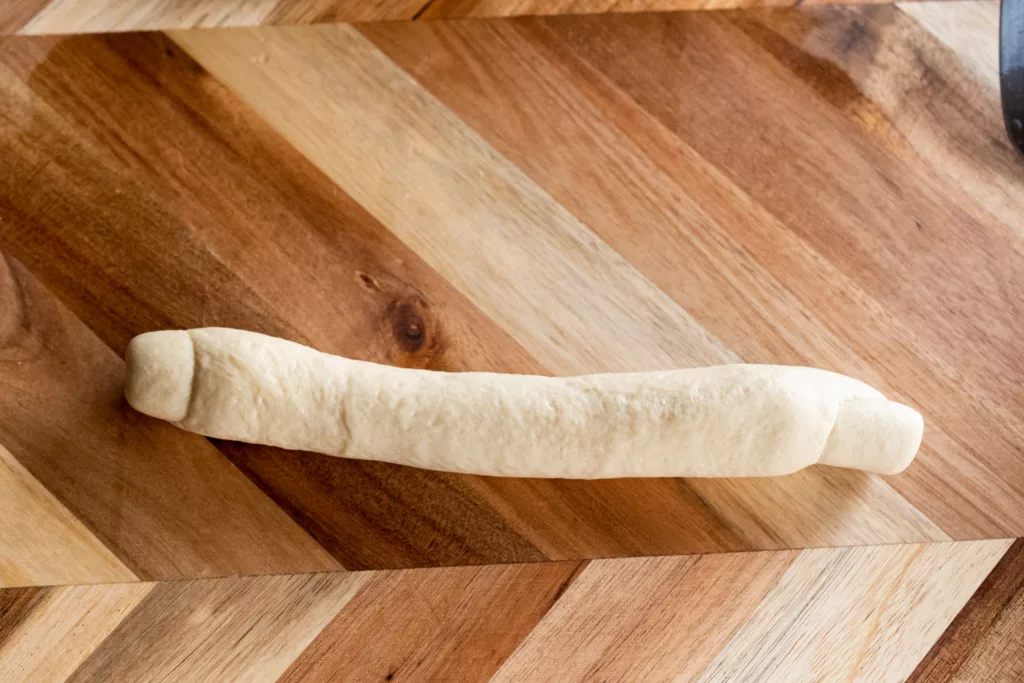




Step 5: Second Rise
Once you have formed all the bagels, lay them onto the prepared baking sheet with parchment paper and sprinkled cornmeal. It’s very important to not skip this step of prep because you DO NOT want your bagels to stick to the baking sheet! One you have arranged all your bagels on a baking sheet, leave them in a warm place to rise for another 30 minutes to an hour. I like to go ahead and preheat my oven to 500 and place my bagels on the stove top above. I crack the oven door periodically to warm up the area above and encourage the bagels to rise.


Step 6: Boiling Bagels
Once your bagels have risen they will be puffy and firm but not dense. Fill a Dutch oven or large stock pot three quarters of the way full of water. Bring it to a roaring boil. Drop one test bagel in. Use a slotted spoon to gently lift it from the bottom if it sinks. Allow it to boil for 45 seconds and then flip it over for 40 seconds more. If the bagel floats after the first 30 seconds, it is ready and you can continue with the rest!
If it doesn’t float after 30 seconds, allow the bagels to continue rising for 10 more minutes before trying another test bagel. Remove the bagel from the water and allow the water to drain before placing on a new baking sheet lined with parchment paper and cornmeal. If adding toppings, sprinkle them on liberally and right away while the top of the bagel is still moist.
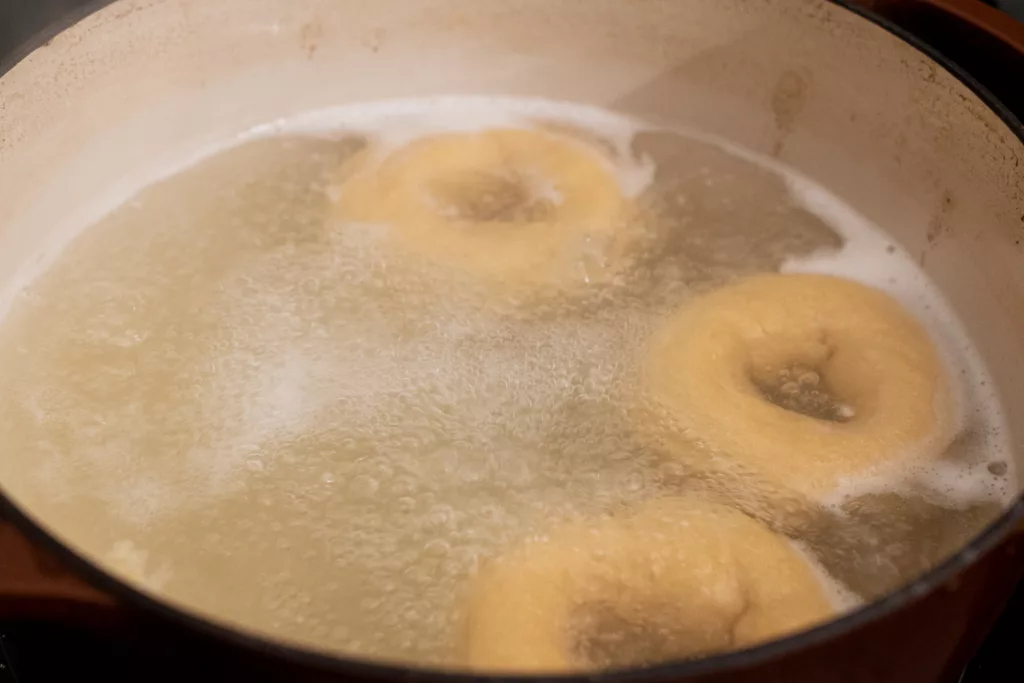

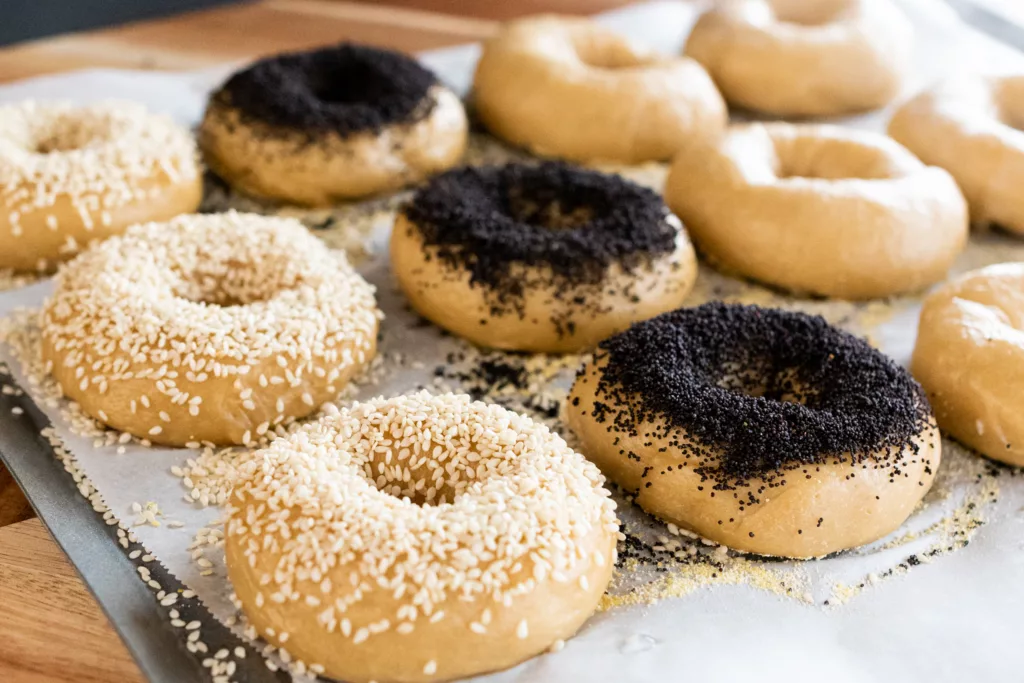
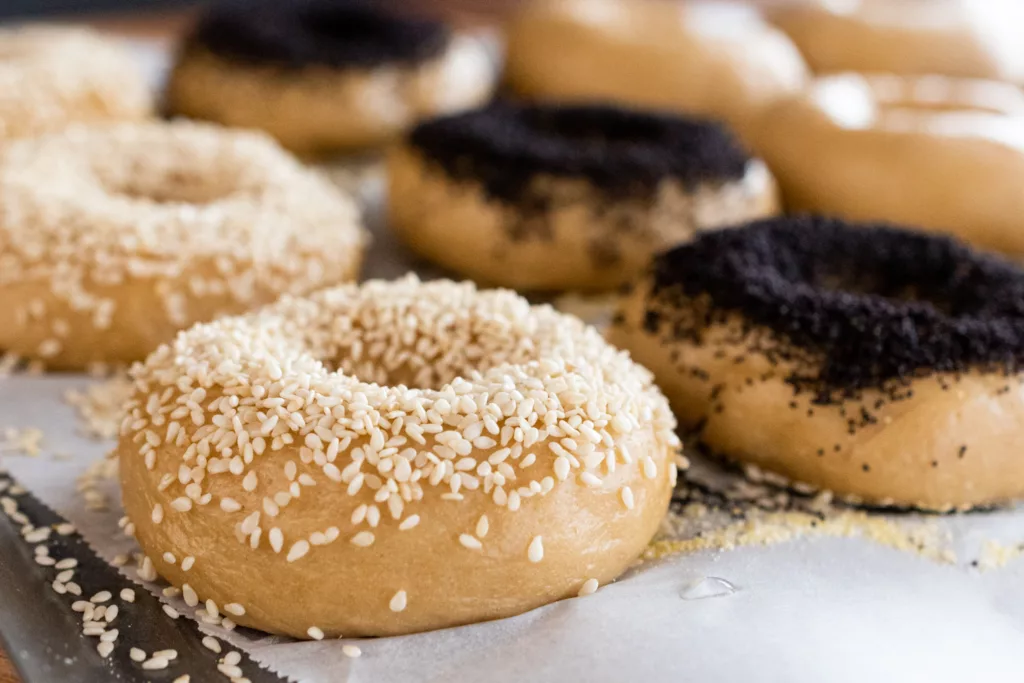
Step 7: Baking the Bagels
Once you have boiled all the bagels and added the toppings, place them in the oven to bake at 5oo degrees for 15 minutes. Then, drop the oven to 450 for 5 more minutes more. Remove the bagels from the oven and allow them to cool slightly before slicing. The bagels should be a deep golden brown and have a shiny, crispy top.

FAQ for perfect sourdough bagels
Why are my bagels dense? Your starter needs to be super active and healthy for this recipe. If it isn’t at peak rise when you make the dough, the dough may not get the rise it needs to bake properly.
Why are my sourdough bagels flat? Flat bagels are often the product of overproved dough. You want to watch your bagels closely during the second rise to make sure they aren’t rising too rapidly.
Can I refrigerate my bagel dough? You can ferment the dough overnight after during the bulk fermentation (first rise) then take the dough out the next day and resume shaping it. Be prepared for the second rise to take slightly longer this way.
Do I have to throw out overproved dough? Nope! You can smush it all down and knead it a few times and reshape, then allow them to do a short proof and boil as directed!
If my bagels don’t float should I still bake or toss them? Definitely still bake them. They may be just slightly underproved and will still turn out a decent, albeit slightly dense bagel. But definitely still edible!
DID YOU MAKE IT? LET ME KNOW BY LEAVING A REVIEW BELOW OR TAGGING ME WITH A PIC ON INSTAGRAM @GOOD.TO.GATHER

Perfect Sourdough Bagels
Ingredients
- 1 cup Active sourdough starter
- 2 cups Filtered lukewarm water
- 2 tbsp molasses
- 1 3/4 tbsp Kosher Salt
- 2 tbsp Table Sugar
- 5 1/2 cups All purpose flour
- 4 tbsp cornmeal for dusting
- Extra Virgin Olive Oil or Unrefined Coconut Oil
- optional: toppings such as everything bagel seasoning. poppy seeds, white sesame seeds
Instructions
- First, measure out two cups of slightly warmer than room temp water. You do not want it to be hot! Just barely warm to the touch. Add the molasses, table sugar and salt to the water. Stir to dissolve. Then, add the starter to the water.2 cups Filtered lukewarm water, 2 tbsp molasses, 1 3/4 tbsp Kosher Salt, 2 tbsp Table Sugar, 1 cup Active sourdough starter
- Transfer the dissolved starter liquid into the bowl of your stand mixer and add the all purpose flour. Mix on low until all the flour is combined. The dough will look shaggy at first, but don't worry! Just keep mixing. Once the flour is incorporated, turn the mixer up to medium speed or five minutes. The dough should look smooth and be tacky but not sticky. It should almost pass the windowpane test.5 1/2 cups All purpose flour
- Place a few Tbsp of olive oil or butter into a bowl and place the prepared dough into the bowl. Turn the dough to coat it on all sides. Cover the bowl with a clean towel and place in a warm location so the dough can begin its first rise. Allow the dough to ferment for 4-6 hours.While the dough ferments, prepare your baking sheet by placing a piece of parchment paper on it. Then sprinkle it with cornmeal to keep the prepared bagels from sticking.4 tbsp cornmeal for dusting, Extra Virgin Olive Oil or Unrefined Coconut Oil
- To begin shaping the bagels, first divide the dough into 12 equal parts. I like to weigh these out on my kitchen scale to 125 grams per dough ball
- Gently stretch the dough ball into a rectangle on the countertop and then roll it tightly away from you into a log. Then, roll the log out so that it is long enough to wrap around your hand. Overlap the dough in your palm and then press the dough seam onto the countertop, rolling a few times to seal the dough
- Once you have formed all the bagels, lay them onto the prepared baking sheet with parchment paper and sprinkled cornmeal. It's very important to not skip this step of prep because you DO NOT want your bagels to stick to the baking sheet! One you have arranged all your bagels on a baking sheet, leave them in a warm place to rise for another 30 minutes to an hour. I like to go ahead and preheat my oven to 500 and place my bagels on the stove top above. I crack the oven door periodically to warm up the area above and encourage the bagels to rise.
- Once your bagels have risen they will be puffy and firm but not dense. Fill a Dutch oven or large stock pot three quarters of the way full of water. Bring it to a roaring boil. Preheat your oven to 500 degrees, Drop one test bagel into the boiling water. Use a slotted spoon to gently lift it from the bottom if it sinks. Allow it to boil for 45 seconds and then flip it over for 40 seconds more. If the bagel floats after the first 30 seconds, it is ready and you can continue with the rest! If it doesn't float after 30 seconds, allow the bagels to continue rising for 10 more minutes before trying another test bagel. Remove the bagel from the water and allow the water to drain before placing on a new baking sheet lined with parchment paper and cornmeal. If adding toppings, sprinkle them on liberally and right away while the top of the bagel is still moist.
- Once you have boiled all the bagels and added the toppings, place them in the oven to bake at 5oo degrees for 15 minutes. Then, drop the oven to 450 for 5 more minutes more. Remove the bagels from the oven and allow them to cool slightly before slicing. The bagels should be a deep golden brown and have a shiny, crispy top.